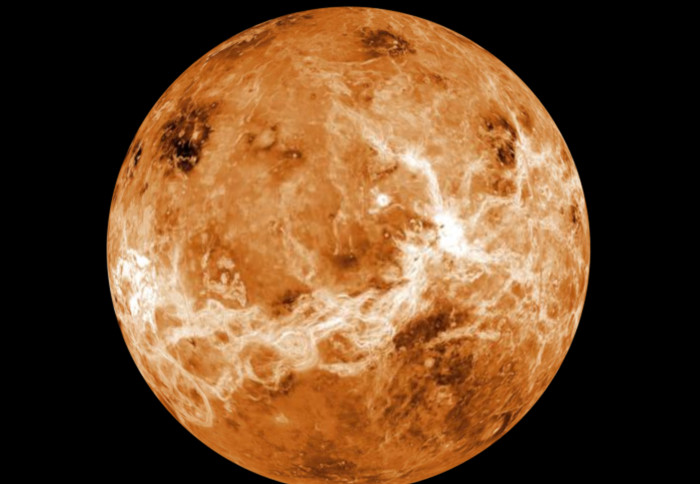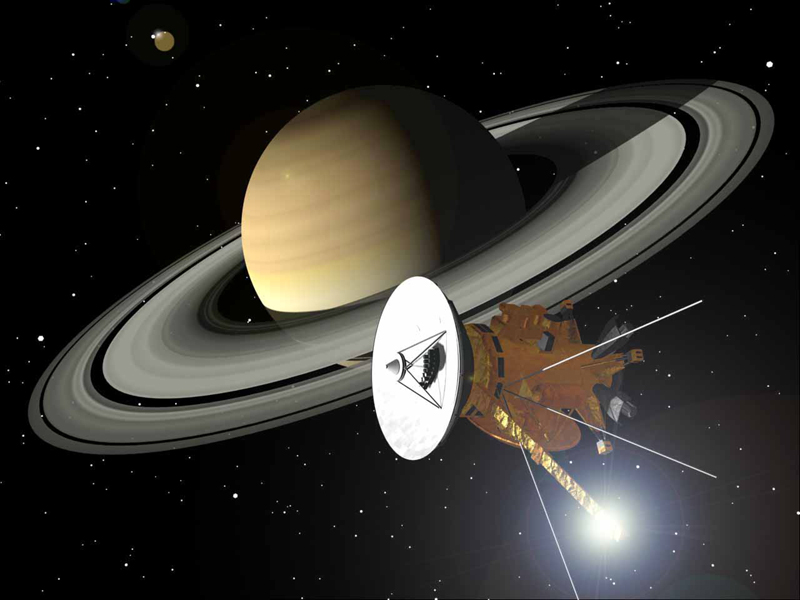Cosmic Father's Day

IC 4628, nicknamed the Prawn Nebula, is an emission nebula in the constellation Scorpius. [Credit: ESO, acknowledgement: Martin Pugh]
Father's Day is celebrated in 111 countries, usually on or near the June solstice. In English-speaking countries, Australia and New Zealand are an exception, as it's celebrated in the spring. However, Father's Day isn't an astronomical holiday. It has evolved as a counterpart to Mother's Day, and not related to the solstice.
It may involve cards, items labelled “World's Best Dad”, a meal out, a book, maybe something related to a favorite sport and – of course – a tie. The tie has become such a cliché that it features in dozens of cartoons. But what might the cosmos have to offer to a cosmic father?
Cosmic edibles
On the breakfast menu, there is the Fried Egg Nebula (IRAS 17163-3907), 13,000 light years away in the constellation Scorpius. A yellow hypergiant star has used up its hydrogen fuel, and is now burning heavier elements. The heavier fuels produce more heat, and this makes the star expand. Its outer layers have expelled gases and dust, creating two huge shells of debris around it, giving it a fried egg look.
Plenty of maple syrup? Go for the Pancake Galaxy (ESO 373-8) 25 million light years away in the constellation Antlia. (Actually, it's just a normal spiral galaxy, but we see it edge-on.)
The heavens have lots of sea creatures, including the zodiac constellations Cancer (crab) and Pisces (fish). In addition, 6000 light years away in Scorpius, is the Prawn Nebula (IC 4628) shown in the header image. As an emission nebula its hydrogen gas, energized by the radiation from a hot star, emits a red glow.
Another emission nebula in Scorpius is the Lobster Nebula (NGC 6537), a stellar nursery containing some of the most massive stars ever discovered. It's also home to lots of baby stars protected by thick gaseous cocoons, and protostars, in the process of formation.
The most famous heavenly crustacean is the Crab Nebula (M1), in the constellation Taurus. It reminded Lord Rosse of a crab when he saw it through his telescope in 1840. However, the famous Hubble Space Telescope image doesn't show it crablike. It's what's left of a star that exploded in a supernova observed in 1054. At the center of the nebula is a pulsar, a rapidly rotating neutron star.
And it's not all sea food. The constellation Leo contains the Hamburger Galaxy (NGC 3628). This is another galaxy edge-on to us, and the dark dust lane in the middle makes it look like something is sandwiched between a bun.
Cosmic sports
How about golf? Alan Shepard, commander of Apollo 14, made two impressive golf shots on the Moon. Astrophysicist Ethan Siegel has calculated that you could hit a golf ball nearly two and a half miles (over 3900 meters) on the Moon. It would take over a minute to land, so you'd need a pretty big golf course.
Swimmers would be disappointed with any planet other than Earth. The only other body in the Solar System with surface lakes is Saturn's moon Titan. Since its lakes are of liquid methane, it's not recommended. Skaters, however, would find Jupiter's moon Europa covered with a layer of ice. And mountaineers might enjoy Mars. Olympus Mons is almost three times as high as Everest.
Americans call it soccer and the rest of the world calls it football. But whatever you call it, there's a ball for a galactic game. Kronberger 61's got it, a planetary nebula in Cygnus that looks like a blue soccer ball. The light of the nebula comes from the glow of energized oxygen which, unlike the red of hydrogen, is in the blue part of the light spectrum.
Family ties
Since a tie is to fathers as flowers are to mothers, we have to include one. The Bow Tie Nebula (PGC 3074547), a protoplanetary nebula, evolving into a planetary nebula. This is a rare finding because the protoplanetary phase is a fairly short phase of stellar evolution. The nebula, located 5000 light years away in the constellation Centaurus, has the distinction of being the coldest spot in the known Universe.
Reference:
Ethan Siegel, "Could you really hit a golf ball miles and miles on the Moon?" https://scienceblogs.com/startswithabang/2010/10/02/could-you-really-hit-a-golf-ba/
Father's Day is celebrated in 111 countries, usually on or near the June solstice. In English-speaking countries, Australia and New Zealand are an exception, as it's celebrated in the spring. However, Father's Day isn't an astronomical holiday. It has evolved as a counterpart to Mother's Day, and not related to the solstice.
It may involve cards, items labelled “World's Best Dad”, a meal out, a book, maybe something related to a favorite sport and – of course – a tie. The tie has become such a cliché that it features in dozens of cartoons. But what might the cosmos have to offer to a cosmic father?
Cosmic edibles
On the breakfast menu, there is the Fried Egg Nebula (IRAS 17163-3907), 13,000 light years away in the constellation Scorpius. A yellow hypergiant star has used up its hydrogen fuel, and is now burning heavier elements. The heavier fuels produce more heat, and this makes the star expand. Its outer layers have expelled gases and dust, creating two huge shells of debris around it, giving it a fried egg look.
Plenty of maple syrup? Go for the Pancake Galaxy (ESO 373-8) 25 million light years away in the constellation Antlia. (Actually, it's just a normal spiral galaxy, but we see it edge-on.)
The heavens have lots of sea creatures, including the zodiac constellations Cancer (crab) and Pisces (fish). In addition, 6000 light years away in Scorpius, is the Prawn Nebula (IC 4628) shown in the header image. As an emission nebula its hydrogen gas, energized by the radiation from a hot star, emits a red glow.
Another emission nebula in Scorpius is the Lobster Nebula (NGC 6537), a stellar nursery containing some of the most massive stars ever discovered. It's also home to lots of baby stars protected by thick gaseous cocoons, and protostars, in the process of formation.
The most famous heavenly crustacean is the Crab Nebula (M1), in the constellation Taurus. It reminded Lord Rosse of a crab when he saw it through his telescope in 1840. However, the famous Hubble Space Telescope image doesn't show it crablike. It's what's left of a star that exploded in a supernova observed in 1054. At the center of the nebula is a pulsar, a rapidly rotating neutron star.
And it's not all sea food. The constellation Leo contains the Hamburger Galaxy (NGC 3628). This is another galaxy edge-on to us, and the dark dust lane in the middle makes it look like something is sandwiched between a bun.
Cosmic sports
How about golf? Alan Shepard, commander of Apollo 14, made two impressive golf shots on the Moon. Astrophysicist Ethan Siegel has calculated that you could hit a golf ball nearly two and a half miles (over 3900 meters) on the Moon. It would take over a minute to land, so you'd need a pretty big golf course.
Swimmers would be disappointed with any planet other than Earth. The only other body in the Solar System with surface lakes is Saturn's moon Titan. Since its lakes are of liquid methane, it's not recommended. Skaters, however, would find Jupiter's moon Europa covered with a layer of ice. And mountaineers might enjoy Mars. Olympus Mons is almost three times as high as Everest.
Americans call it soccer and the rest of the world calls it football. But whatever you call it, there's a ball for a galactic game. Kronberger 61's got it, a planetary nebula in Cygnus that looks like a blue soccer ball. The light of the nebula comes from the glow of energized oxygen which, unlike the red of hydrogen, is in the blue part of the light spectrum.
Family ties
Since a tie is to fathers as flowers are to mothers, we have to include one. The Bow Tie Nebula (PGC 3074547), a protoplanetary nebula, evolving into a planetary nebula. This is a rare finding because the protoplanetary phase is a fairly short phase of stellar evolution. The nebula, located 5000 light years away in the constellation Centaurus, has the distinction of being the coldest spot in the known Universe.
Reference:
Ethan Siegel, "Could you really hit a golf ball miles and miles on the Moon?" https://scienceblogs.com/startswithabang/2010/10/02/could-you-really-hit-a-golf-ba/
You Should Also Read:
Mother's Day - an Astronomy Bouquet
Titan - Planet-sized Moon of Saturn
Citizen Science in the Electronic Age

Related Articles
Editor's Picks Articles
Top Ten Articles
Previous Features
Site Map
Content copyright © 2023 by Mona Evans. All rights reserved.
This content was written by Mona Evans. If you wish to use this content in any manner, you need written permission. Contact Mona Evans for details.







